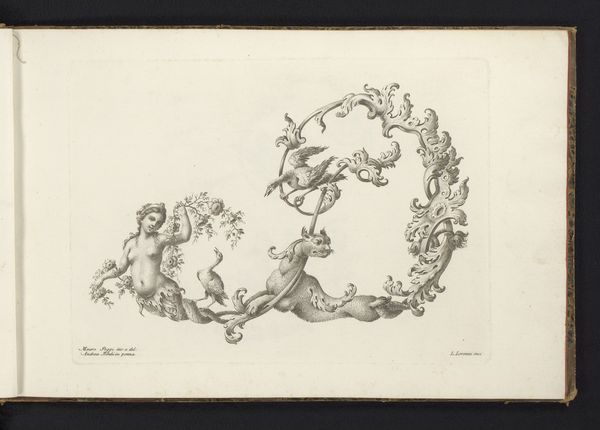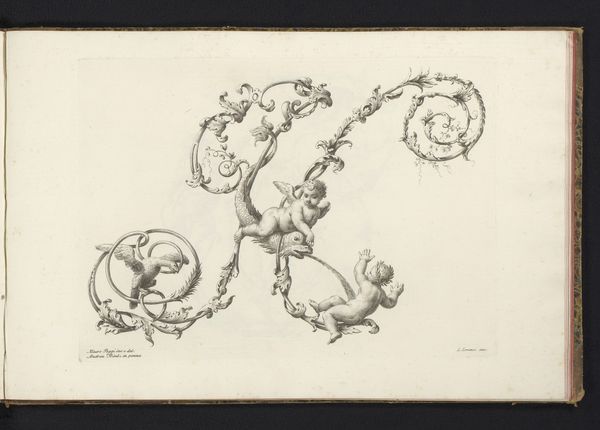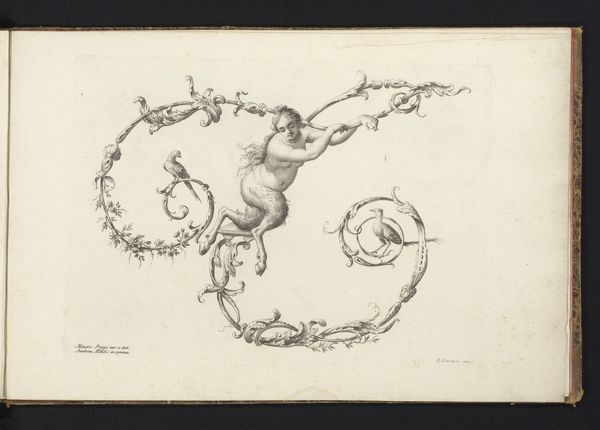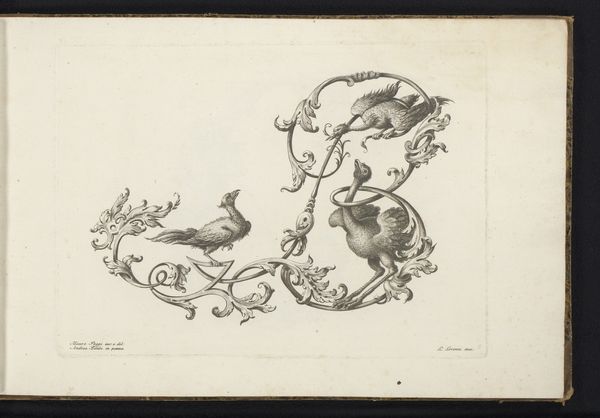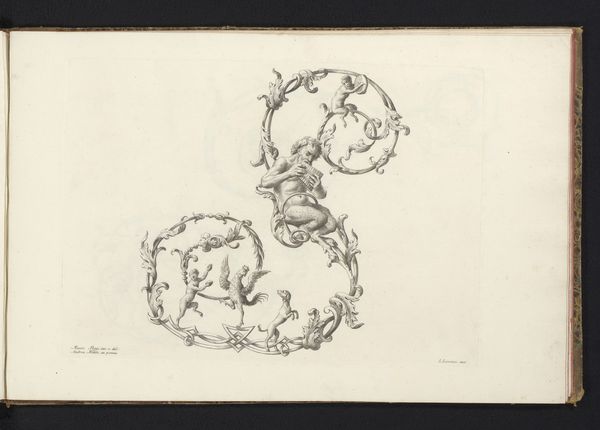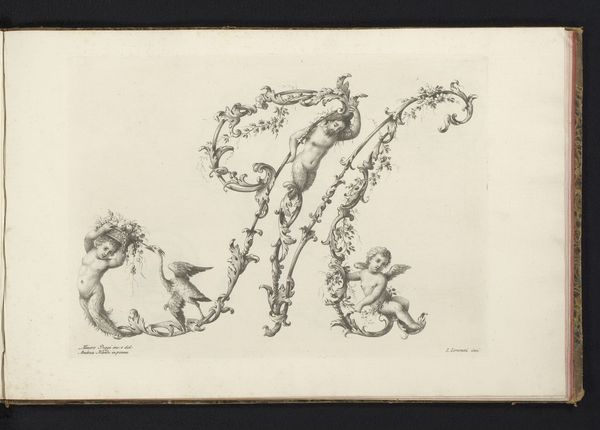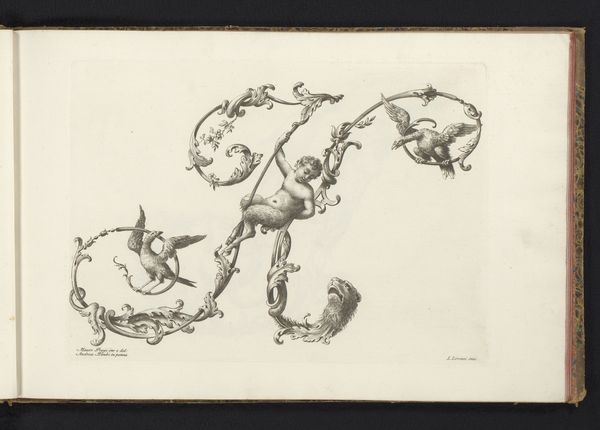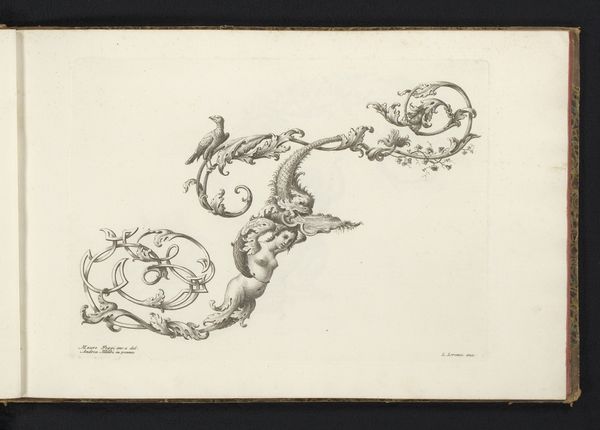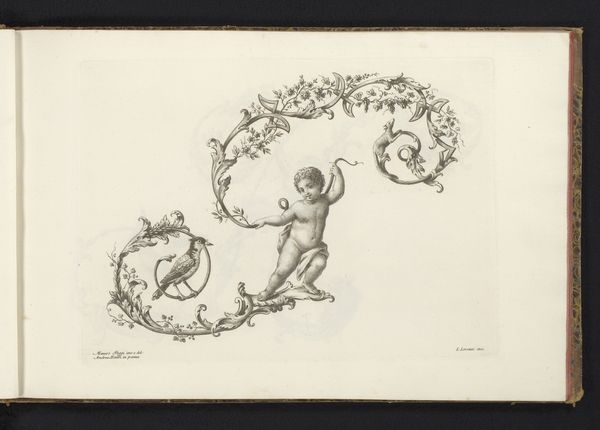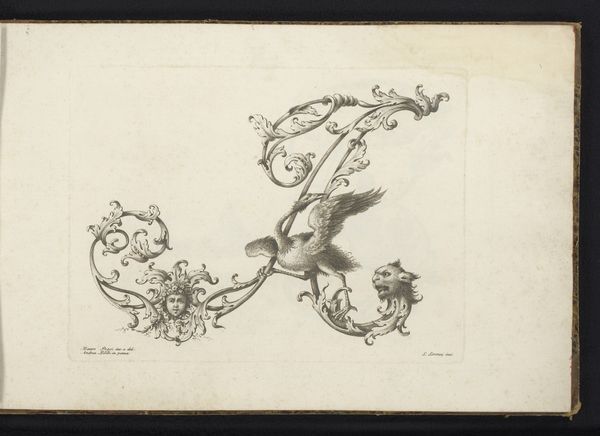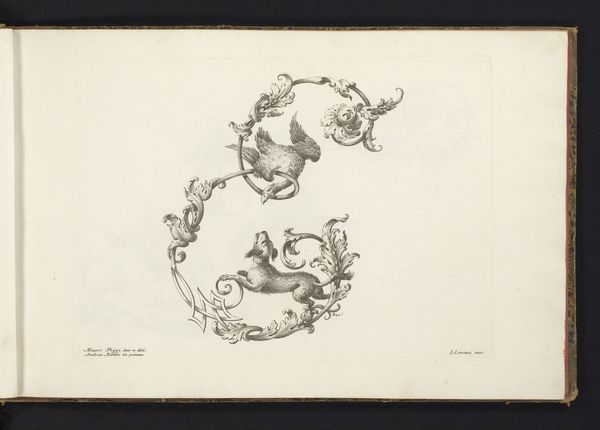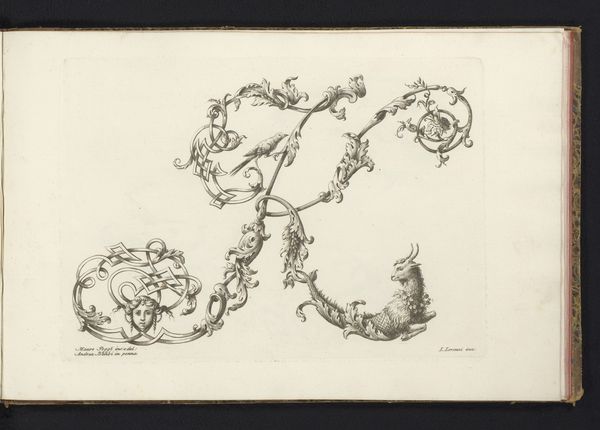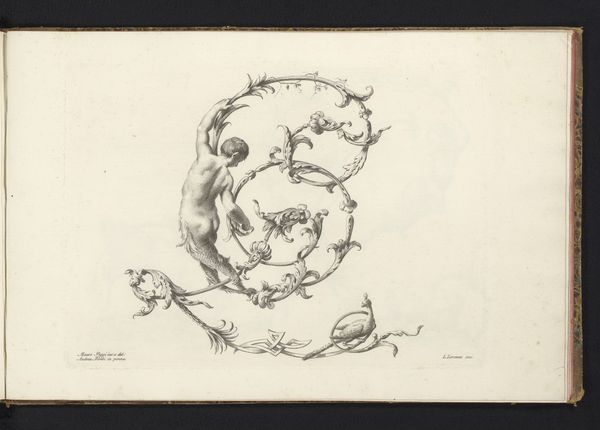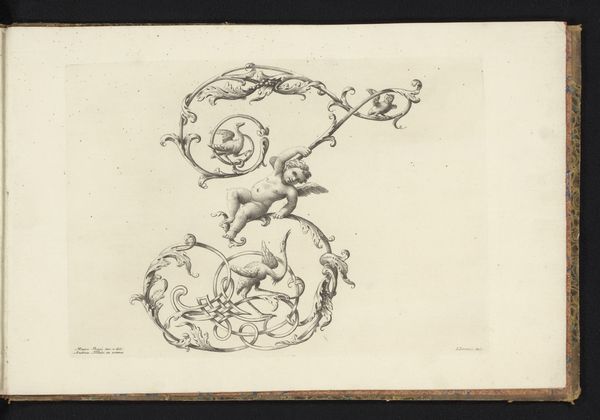
#
light pencil work
#
pen drawing
#
pen sketch
#
sketch book
#
personal sketchbook
#
pen-ink sketch
#
pen work
#
sketchbook drawing
#
sketchbook art
#
fantasy sketch
Dimensions: height 228 mm, width 317 mm
Copyright: Rijks Museum: Open Domain
Curator: This intriguing pen sketch, "Ornamentele letter I," resides in the Rijksmuseum and was conceived by Lorenzo Lorenzi sometime between 1745 and 1765. It looks like it might come from a personal sketchbook, and it presents the letter "I" quite fancifully. Editor: My first thought is what a delightfully bizarre little scene! There’s this rather surreal combination of elements: a bird, a human figure emerging from ornamentation, and even a snake winding through foliage. Curator: Indeed! This work exists within the context of ornamental design, flourishing especially in the 18th century. These intricate, often asymmetrical designs were influential for everything from furniture to architecture, representing an important visual language. It reflects the era’s artistic sensibilities and also broader trends in craftsmanship and social expression. Editor: It strikes me, though, that while this piece is an exercise in aesthetic decoration, there’s also a strange, unsettling current running beneath the surface. The semi-nude figure feels particularly charged, like a relic from an earlier period that didn’t fully embrace notions of consent, particularly from a contemporary feminist point of view. Also, how much control did a maker really have, especially within what may have been patriarchal or imperial social constructs. Curator: That's a valid point to raise. Such images often served a dual purpose: displaying mastery of artistic skill while also reflecting societal norms and, sometimes, reinforcing power structures. Who owned such sketchbooks and for what means is also telling; what type of patronage supported its distribution and by which mechanisms. The motifs, borrowing heavily from mythology and natural forms, acted as status symbols but must be critically analyzed. Editor: Examining it through that lens reveals the sketch’s more complex and troubling undertones, showing it’s not simply beautiful but also deeply embedded in its era's politics and assumptions. This brings a new significance, understanding the ways cultural artifacts shape norms. Curator: Precisely! These historical pieces like this, demand to be contextualized. Editor: Ultimately, even in its function as an elaborate letter, this piece shows a fusion of aesthetic sensibilities.
Comments
No comments
Be the first to comment and join the conversation on the ultimate creative platform.
